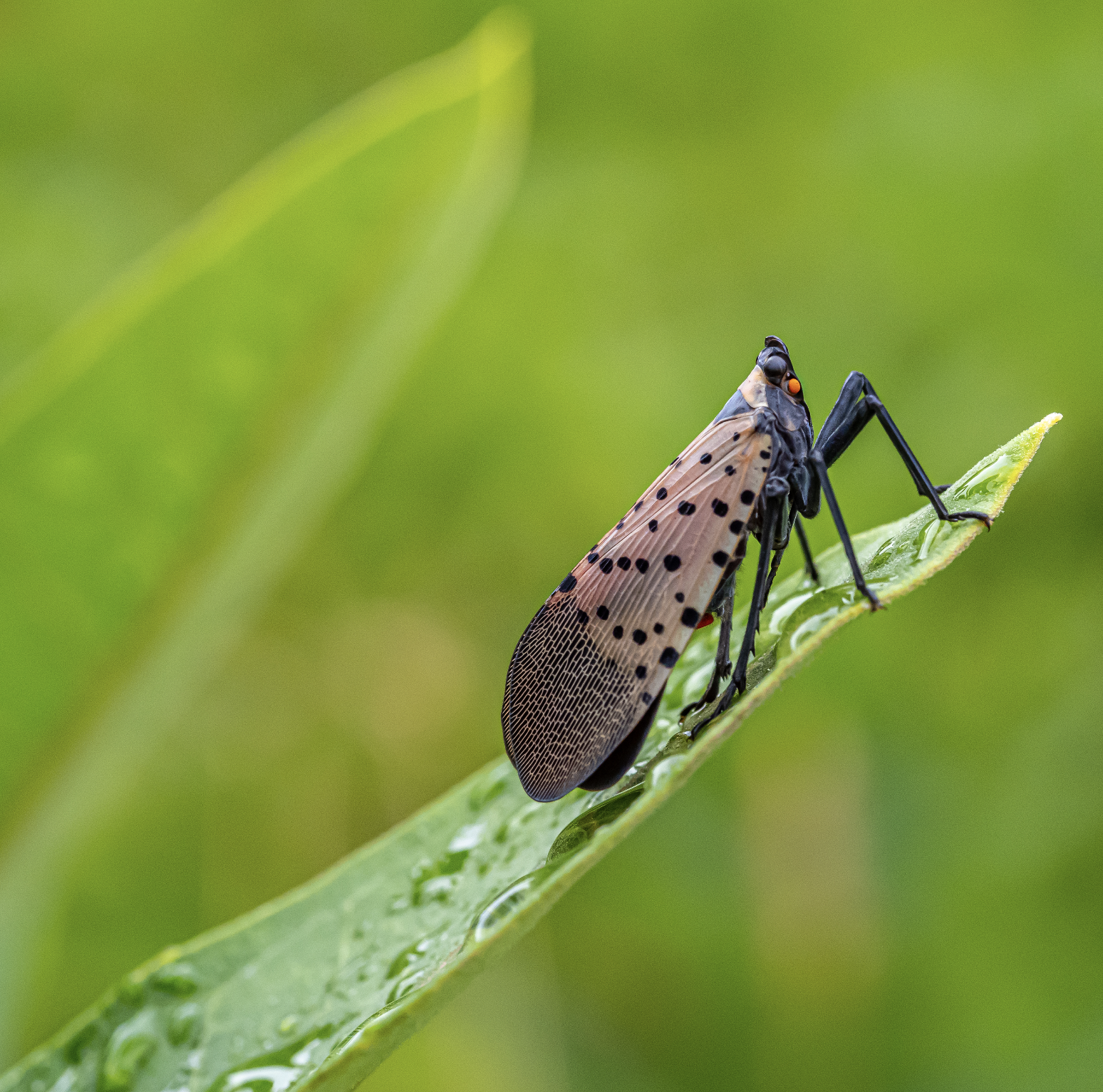July has brought more than scorching temperatures and humidity to Charlottesville. There has also been a sharp increase in spotted lanternfly sightings.
First found in the United States in Pennsylvania in 2014, the spotted lanternfly is an invasive species from Asia. How the insect arrived in the country is unknown, but it likely entered on imported goods, according to the U.S. Department of Agriculture. Since its original discovery, the SLF has been found in 18 states, including Virginia—which first reported it in 2018.
More than half of Virginia counties and cities now have known SLF populations, including Charlottesville and its surrounding counties. As of this March, Virginia no longer requires quarantine procedures when moving regulated materials from areas where SLF have been spotted.
Early advice regarding the SLF was to stomp or otherwise kill all life stages of the insect, and use Virginia’s invasive species reporting tool (invasivespeciesva.org) to report seeing it. Sightings should still be reported in areas without known populations, but killing the insects is unlikely to be effective at this point.
“Absolutely, knock yourself out, stomp them and scrape the egg masses when you see them,” says Carrie Swanson, agriculture and natural resource extension agent for Albemarle County. “There’s nothing wrong with that, but … it’s not going to be the end solution.”
While there was concern about the insect’s impact on agriculture, given its lack of predators, Virginia has not seen impacts at the same level as Pennsylvania. Ahead of the large-scale arrival of the invasive insects, the Virginia Department of Agriculture and Consumer Services worked with organizations statewide to educate on inspection, prevention, and management.
“For most homeowners … this is going to be a nuisance pest, this is really not going to be a pest that causes a great deal of damage,” says Swanson, also noting the SLF are not harmful to people or pets. “There are a lot of contact insecticides that can be effective against them, but there’s not really a need, in most cases, to use them. … The same insecticides can be harmful to beneficial insects. So we’re trying to spread the word of a little patience and tolerance.”
The agriculture industry, and vineyards in particular, have been the most affected by the spotted lanternfly. Beyond their preferred food source, tree of heaven (which is also invasive), the insect feeds on plants including grapes, hops, and hardwood trees. When feeding, the SLF excretes a sticky substance commonly referred to as honeydew, which then causes mold.
In vineyards, the Virginia Cooperative Extension recommends increased insecticide use, especially during peak SLF season. The insects hatch between late April and early May, developing into adults in July and increasing in population before laying eggs from September until the first freeze.
More than smashing the insects, one of the best ways to fight spotted lanternflies is to kill tree of heaven plants.
For Virginia entomologists, spotted lanternflies are largely old news. But a hot new insect has entered the villa: red imported fire ants.
Unlike fire ants that are native to Virginia, red imported fire ants are an invasive, aggressive, and venomous species. While they first arrived in the U.S. around 1918, the spread of RIFA has been relatively slow. The species has been in Virginia since 1989, but has been mostly contained to the far southwest and southeast of the commonwealth.
The species is small, and its mounds vary in appearance, ranging from inconspicuous, almost flat dirt to a more classic anthill look, making them difficult to spot.
The first RIFA mounds were officially documented in Albemarle County earlier this year in and around the Kohl’s parking lot in Hollymead Town Center and the Holly Memorial Gardens across the street. Beyond a nuisance, the ants present a significant safety issue.
“The big issue for fire ants is worker safety, personal safety,” says Eric Day, manager of the Insect Identification Lab and entomology professor at Virginia Tech. Day is an author or co-author of many Virginia Cooperative Extension guides, including several on the SLF, RIFA, and hybrid fire ants.
“Nobody intends to step on a fire ant mound,” says Day. “It’s often someone’s going and checking on or reading a meter, or checking and looking at a tree.”
Reactions to RIFA stings vary, ranging from mild pain and redness to anaphylaxis.
The Virginia Department of Agriculture and Consumer Services has treated the Albemarle County site. Once an area is past eradication possibility, the state will no longer handle the treatment of the species and will add it to the quarantine list.
At press time, Albemarle County has not been added to the RIFA quarantine. Both Swanson and Day indicated on July 18 that the number of active mounds has dropped significantly since their visit in May. Any RIFA sightings in the area should be reported through the Virginia Invasive Species reporting tool.More information on red imported fire ants and spotted lanternflies can be found at vdacs.virginia.gov.






